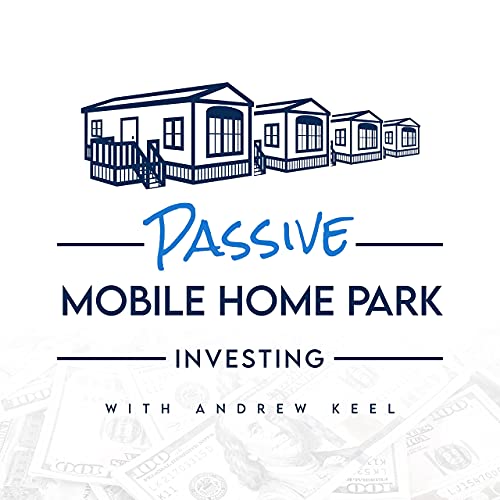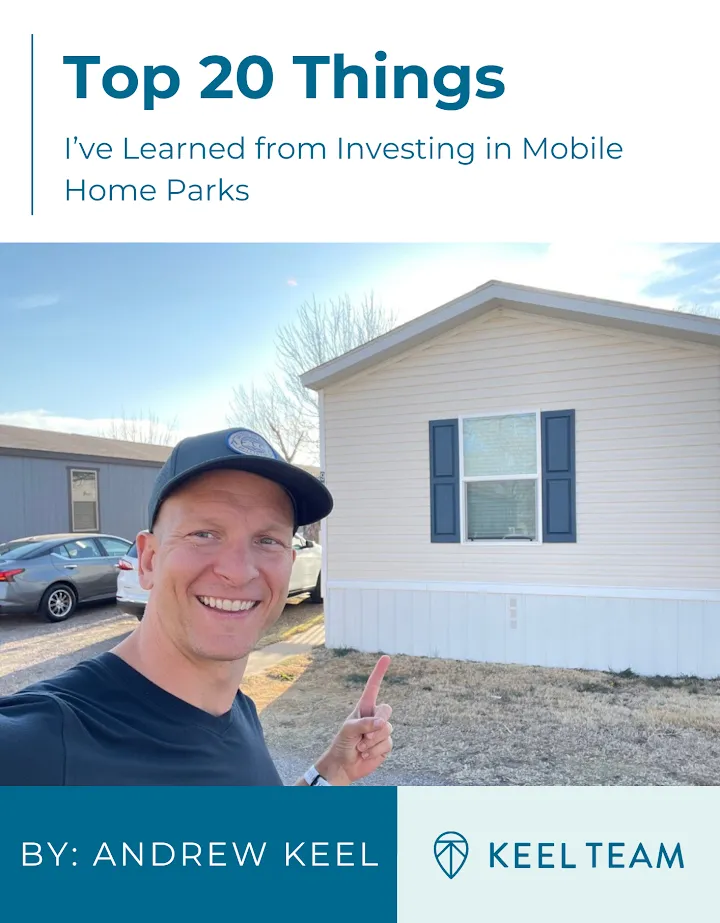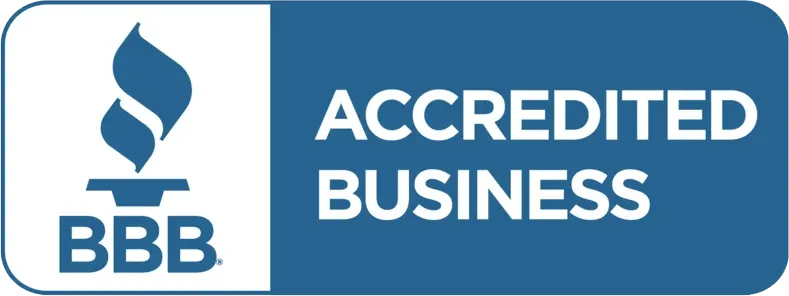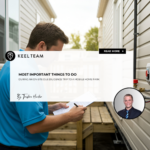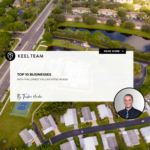The Impact of Interest Rates on Passive Mobile Home Park Returns
-
 Tristan Hunter - Investor Relations
Tristan Hunter - Investor Relations
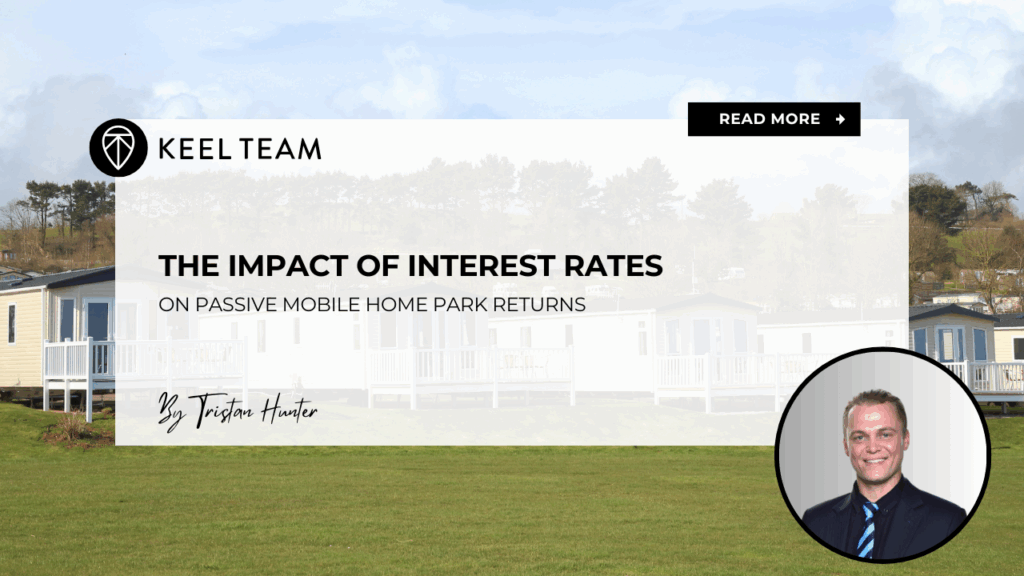
Passive investing in mobile home parks has gained significant attention in recent years. Many investors are drawn to the sector because it combines the benefits of affordable housing demand with the potential for consistent returns. However, one factor that can strongly influence outcomes is interest rates. When interest rates rise or fall, they affect everything from property valuations to financing costs. Understanding how interest rates impact passive mobile home park returns is essential for investors who want to make informed decisions. While no investment outcome is guaranteed, evaluating these dynamics may help investors better navigate the opportunities and challenges in this space.
Why Interest Rates Matter in Real Estate
Interest rates are central to nearly every real estate investment strategy. In mobile home park investing, they influence both the operator’s ability to secure financing and the long-term value of the property.
When rates are low, operators can borrow at lower costs, which often improves cash flow and allows for more aggressive growth strategies. On the other hand, when rates rise, borrowing becomes more expensive. This shift may reduce margins, slow down acquisitions, or impact overall investor distributions.
Because mobile home park syndications typically use some form of leverage, interest rate trends play a direct role in shaping returns for passive investors.
The Connection Between Interest Rates and Mobile Home Park Valuations
Cap Rates and Valuations
One of the clearest ways interest rates impact mobile home park investing is through capitalization rates (cap rates). A cap rate is essentially the expected return on a property based on its net operating income (NOI).
When interest rates rise, cap rates often adjust upward as well. This adjustment means valuations may decrease even if the property is generating the same income. Conversely, when interest rates fall, cap rates may compress, leading to higher valuations.
For passive investors, this dynamic highlights that returns are not solely tied to the income from the mobile home park but also to the broader financial environment.
Download our FREE eBook on the Top 10 things to know BEFORE investing PASSIVELY in mobile home parks!
Investor Demand and Pricing
Low interest rates typically create more competition for mobile home park acquisitions. Institutional and private investors alike look for stable income-producing assets, and mobile home parks often fit that description. Increased competition can drive up purchase prices, potentially squeezing returns.
On the other hand, rising rates may reduce demand, which could slow down price growth or even create opportunities for operators who can still make deals pencil out.
Impact on Cash Flow and Distributions
Financing Costs
Most mobile home park operators rely on debt financing to acquire properties. When interest rates increase, monthly debt service payments also increase. Higher financing costs may reduce the cash flow available for distributions to passive investors.
For example, a mobile home park with a steady NOI may suddenly see a significant portion of its income redirected to cover higher debt obligations. This shift can impact the timing and size of investor distributions.
Fixed vs. Variable Rates
Operators often choose between fixed-rate and variable-rate loans. Fixed-rate loans offer stability since the interest expense does not change over time. Variable-rate loans, however, can fluctuate as interest rates change.
If an operator has chosen variable-rate financing, rising interest rates can directly reduce cash flow. This is an important factor for passive investors to consider when reviewing offering documents.
Influence on Exit Strategies
Timing of Sales
Mobile home park operators often plan to sell properties after several years to realize gains for investors. Interest rates can influence the timing of these sales.
If rates rise significantly, potential buyers may face higher financing costs, which can reduce the price they are willing to pay. This could lower the proceeds from a sale and impact investor returns.
Alternatively, in a low-interest-rate environment, buyers may be willing to pay more for stable income-producing properties like mobile home parks. This dynamic can benefit passive investors when it comes time to exit.
Refinancing Options
Many operators aim to refinance mobile home park properties to secure better terms and return capital to investors. However, refinancing depends heavily on interest rate conditions.
If rates have risen since the initial acquisition, refinancing may not provide the same benefits as before. This can delay or reduce the amount of capital returned to passive investors.
How Rising Interest Rates Affect Mobile Home Park Demand
While rising interest rates create challenges for financing and valuations, they do not necessarily reduce tenant demand for affordable housing. In fact, economic uncertainty often strengthens demand for mobile home parks.
As the cost of traditional housing increases, mobile home parks continue to provide one of the most affordable housing options in the United States. This consistent demand can help stabilize occupancy and rental income even in challenging financial environments.
For passive investors, this means that while interest rates may affect returns on paper, the fundamental demand for affordable housing often remains resilient.
Mitigation Strategies Used by Operators
Conservative Underwriting
Experienced mobile home park operators often prepare for changing interest rate environments by using conservative assumptions in their underwriting. By projecting higher rates or building in buffers, they may help protect investor returns from unexpected increases.
Locking in Fixed Rates
Operators sometimes secure long-term fixed-rate loans to provide stability. This approach helps insulate cash flow from interest rate volatility and provides more predictable distributions for passive investors.
Value-Add Improvements
Another way operators may offset rising interest rates is through value-add strategies. For example, increasing occupancy, upgrading infrastructure, or improving management efficiency can boost NOI. Higher NOI can help counteract the impact of increased financing costs and support stronger returns.
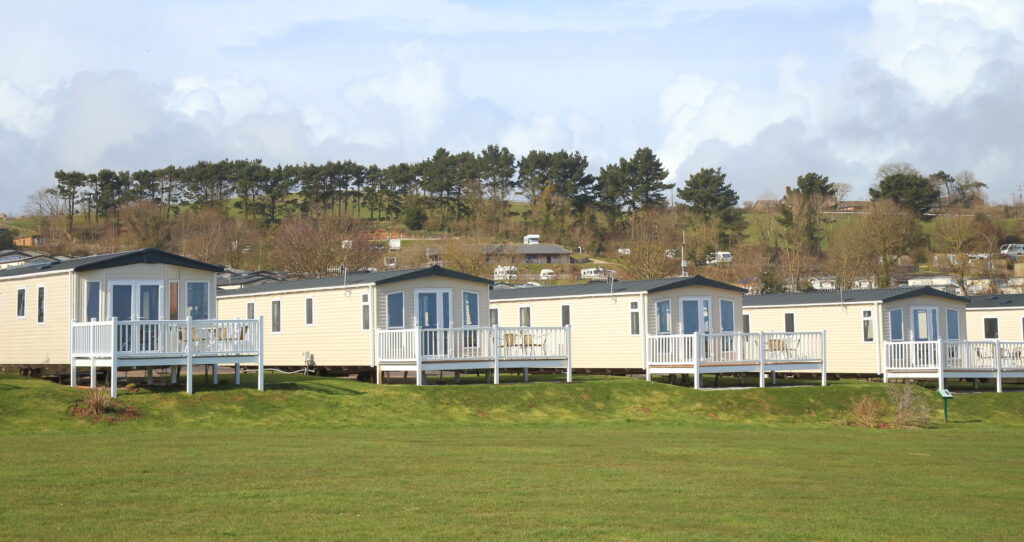
What Passive Investors Should Look For
Review the Financing Terms
Passive investors should always review the financing strategy outlined in the offering documents. Understanding whether loans are fixed or variable, and the length of the loan term, can provide insight into how interest rate changes may affect returns.
Evaluate Stress Testing
Operators sometimes include sensitivity analyses in their materials, showing how different interest rate scenarios could affect performance. Reviewing these scenarios can help passive investors assess the level of risk they are comfortable with.
Consider the Track Record
The operator’s experience in navigating different interest rate environments is an important factor. An operator who has successfully managed properties through both high and low interest rate periods may be better positioned to protect returns.
Long-Term Outlook for Passive Investors
Interest rates will continue to fluctuate, and no one can predict them with certainty. However, passive investors in mobile home parks may benefit from focusing on long-term fundamentals.
Affordable housing demand remains strong, and mobile home parks fill a unique niche. While interest rates can influence financing costs, valuations, and exit strategies, the underlying need for affordable housing may help provide stability.
For investors, the key lies in aligning with experienced operators who anticipate interest rate shifts and build strategies to navigate them effectively.
Conclusion
The impact of interest rates on passive mobile home park returns is undeniable. Rates influence everything from acquisition costs and cash flow to exit strategies and valuations. Rising rates can create challenges, while falling rates often open doors for growth and expansion.
Although no outcome can be guaranteed, passive investors who understand how interest rates affect mobile home park investing may be better prepared to evaluate opportunities. By paying attention to financing structures, operator strategies, and long-term housing demand, investors can position themselves to make more informed decisions in this unique asset class.
Are you looking for MORE information? Book a 1-on-1 consultation with Andrew Keel to discuss:
- A mobile home park deal review
- Due diligence questions
- How to raise capital from investors
- Mistakes to avoid, and more!
Disclaimer:
The information provided is for informational purposes only and is not investment advice or a guarantee of any kind. We do not guarantee profitability. Make investment decisions based on your research and consult registered financial and legal professionals. We are not registered financial or legal professionals and do not provide personalized investment recommendations.

Tristan Hunter - Investor Relations
View The Previous or Next Post
Subscribe Below 👇
